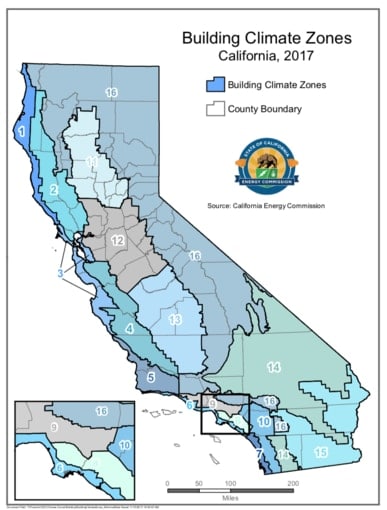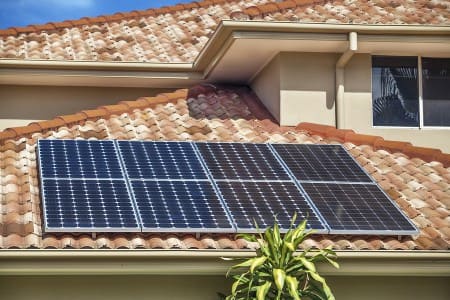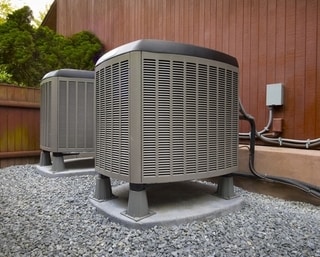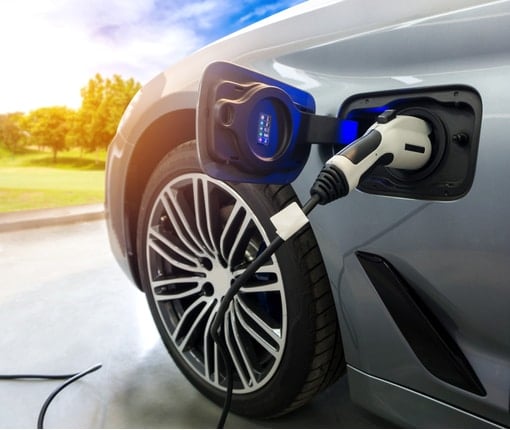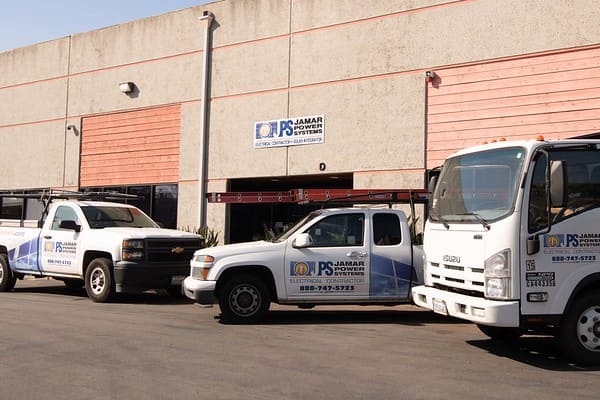Solar Installations for New Home Builders
Solar Installations For New Home Construction
A solar energy (PV) system is now required on all homes built in California. See our 2019 CA building standards for solar section below for more information and how to size a system.
Are you a home builder seeking an experienced solar installer?
Experience. We have installed over 50,000 solar panels representing over 1,000 projects. We install both rooftop and ground-mounted solar power systems.
Premium Panels at a Low Price. We have arranged special price agreements with our suppliers for our panels, inverters based on our sales volume and pass those savings to our clients.
Great Service. We provide panel-level monitoring systems and promptly respond to post-installation warranty claims. Learn more about Enphase panel-level monitoring.
Team Players. We are production electricians who know and understand the needs of a home builder.
We work closely with your design team, project manager, purchasing agent, and field superintendents to meet their schedules.
We work with your roofer, plumber, and electrician to ensure a coordinated installation.
See the logo list below of our current and recent home builder clients. We’ve provided electrical contracting services to home builders since 1984.
Customer Options. We offer option packages such as additional panels, premium warranties, and scalable battery storage to help you profit while offering homeowners high-performing systems. Learn more about Ensemble by Enphase Energy.
Solar Lease Option. Leasing allows the builder to defer costs from construction to the homeowner. See our FAQ – “pros/cons on lease vs. purchase.”
Warehouse Storage. Our 7,000 sq. ft. warehouse and full-time shipping and receiving personnel are included with our service. This allows a safe and secure place to store your solar panels, racking, and inverters before installation.
Our turnkey solar installation services take care of everything for you:
- site inspection
- shade study
- design
- engineering
- permitting
- materials
- installation
- utility interconnection
- operation
- monitoring
- maintenance & repairs
To discuss your building project, contact us at [email protected] or call us at (619) 448-7770.
Jamar Power Systems are long-standing and active members of the Building Industry Association (BIA) and the Western Electrical Contractor’s Association (WECA)


Some Of The Home Builders We Have Proudly Worked With:























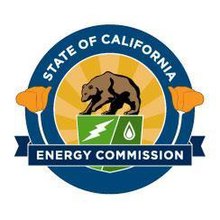
The 2019 CA Building Standards Requirements for Solar Energy
The 2019 CA residential building energy efficiency standards for new homes built in 2020 and beyond include upgraded requirements to the building envelope, HVAC, and lighting systems, as well as the installation of a solar energy system.
This article will discuss the requirements for site-installed solar for low-rise residential buildings.
The new building standards also allow for the solar energy to be provided offsite by a “Community Shared Solar Electric Generation system,” which means the solar electric generation or other renewable technology electric generation is installed at a different location.
For more info on shared systems see the Energy Dept’s website:
What’s the minimum size solar energy system required?
Your Title 24 Energy Analyst will calculate the exact size solar power system needed.
The info below will help if you want to get some basic budget numbers.
The new building standards created the following formula to determine the size of the solar power system required:
kWpc = (CFA x A)/1000 + (NDwell xB)
kWpc = kW size (DC) of the PV system
CFA = conditioned floor area
NDwell = number of dwelling units
A = adjustment factor from climate zone table 7-1
B = dwelling adjustment factor from zone table 7-1
Coastal San Diego is mostly Zones 6 and 7, and our inland zones are 10, 14, 15, and 16.
Adjustment factors for Zone 7 result in the least amount of solar PV system of any zone in California. Coastal Zone 6 also has low requirements, while the inland zones provide mid-range factors for adjustments.
To find your building zone, see the CA Energy Commission Building Climate Zones.
Example of building a 2,000 sq. ft. two-story residential building:
kWpc = (2,000 sq. ft. conditioned floor area x climate zone 7 CFA adjustment factor of 0.572) = 1144/1000 = 1.144 + (1 dwelling x dwelling zone 7 adjustment factor B of 1.15) = 1.15
A 2.294 kWpc (DC) PV system is required = 1.144 + 1.15.
You work the math backward to get your minimum required solar PV size.
Using a 350-watt premium PV panel, that would be 7 PV panels (measuring approximately 40 x 67 inches each).
Exceptions to PV Requirements formula:
1. less than 80 sq. ft. of unshaded roof space from permanent barriers (trees, hills, structures). No PV is required.
2. climate zone 15 only may reduce PV size if not enough roof space for full system per formula but no less than 1.5 Watt DC per sq. ft. of conditioned floor area.
3. applies only to two-story residential buildings and allows for a reduction of PV system size if roof space is limited but no less than 1.0 Watt DC per sq. ft. of conditioned floor area.
4. applies to three stories or higher residential buildings and allows for a reduction of PV system size if roof space is limited but no less than .08 Watt DC per sq. ft. of conditioned floor area.
5. if the dwelling was permitted before January 1, 2020, with 80 – 200 sq. ft. of solar-ready roof space, then you may install the lesser of the result of their new formula, or what fits in the available roof space with effective solar access.
6. the required PV system size may be reduced by 25 percent if a battery storage system is installed. For a single-family dwelling, the minimum capacity of the battery storage system must be at least 7.5 kWh.
For multi-family dwellings, it must be 7.5 kWh per dwelling.
Battery backup systems also must meet qualifications specified in Joint Appendix JA12 and be certified and listed with CEC.
In addition, the PV system must be permitted, interconnected to the local utility company and meet their equipment requirements, and provide remote energy production monitoring.
Shading and roof orientation play a role.
A solar assessment tool must measure and record annual projected shading from each roof orientation.
We can help you with the exact math for your project(s). Contact us.
Q. What are the pros/cons of offering a lease program vs. purchase?
A. One primary concern about the new solar requirements that we’ve heard from home builders is the FHA and VA loan limits.
If your sales prices are close to those loan limits, then the cost and margin of the solar energy system would subtract from the available price for the remainder of the home.
A solar lease or PPA diverts the cost of the solar energy system from you, the homebuilder, to the homeowner and the financing company.
There are other concerns for you as the builder to consider. Some leases and PPA’s saddle the consumer with tough terms, (i.e., escalating payments, high buyout prices when selling the home, slow repair process, weak power production guarantees, and no end of the lease buyout provision). Be very careful of the sales talk; read every detail, and carefully compare the lease terms.
Purchasing the solar power system allows the homeowner to receive the lowest-cost electricity because they own it with their home, with its cost included in their mortgage.
Purchasing is a simple transaction allowing the builder to markup the solar system and make a profit on it.
Purchasing allows the homeowner to take the federal tax credit; which in 2022 is 26% of the sales price to the homeowner.
Disclaimers: savings and tax credits are not guaranteed. Consult your tax advisor.
We provide all options to home builders:
- solar leases
- solar power purchase agreements
- solar purchases
- cash purchase discounts
- no payment until after escrow close options
- premium-quality solar components
- 25 year product and power warranties
- battery storage systems
- in-house installation
- production contractors
- design, engineering, permits, installation, & interconnection included
- offer your home buyers lower electric rates
For more information about the differences, see our Guide to a Solar Lease, PPA, and Buying.
Q. Is the amount of solar PV required really “meaningful” – or do we need to provide significantly more than that?
A. The solar PV required is only enough for the most basic user of electricity.
It will vary by a building’s envelope and energy efficiencies, and the occupants’ usage and behavior, but the system size these calculations produce will not generate enough electricity to provide electric utility offset for any air conditioning usage, and certainly not enough for a spa, pool, or electric vehicle (EV).
Communicate with your buyers about their electric usage, needs, and future plans.
For insight into their past electricity consumption, ask them to get their last 12 months kilowatt usage from their current electric utility and examine that history along with that home’s energy efficiencies (or lack of).
Do they intend to plan to add to their electric load?
Any plans to:
- run A/C system?
- put a freezer in the garage?
- build a swimming pool?
- install a spa?
- add a wine cooler?
- get an electric car?
Let’s take a look below at what a couple of those additions will do to the homeowner’s electric load and their wallet through their electric utility bill.
How much solar is needed to offset an HVAC system?
An average A/C system is using about 5 kilowatts per hour (kWh).
How many average hours does an A/C run in [your building’s city]?
Inland San Diego County areas can use A/C up to seven hours per day for five months or more.
A/C Example:
5 kWh x 7 hours = 35 kWh’s per day for A/C alone.
35 kWh x 30 days avg = 1,050 kWh evry 30 days.
1,050 x 5 months of A/C usage = 5,250 kWh per year for A/C usage.
SDG&E summer baseline electric rate as of Feb 2020 is $0.30 per kWh.
5,250 kWh A/C usage x $0.30 = $1,575 electric utility bill.
Tip: divide the total annual kWh needed by 1.5 to get an approximate solar PV system size needed in Watts (DC).
5,250 kWh A/C usage / 1.5 = 3,500 Watt PV System required (3.5kW).
3,500 / 350 watts per premium PV panel = 10 solar panels needed to offset average A/C usage.
How much electricity does an Electric Vehicle (EV) need?
A typical Tesla car uses 35 kilowatt-hours (kWh) per 100 miles (source).
35 kWh / 100 miles = .350 kWh for every mile you drive.
How many miles are you going to drive per year and need to charge at home?
Take that number and multiply by .350.
EV Example:
20,000 miles per year x .350 = 7,000 kWh needed per year to charge one Tesla vehicle.
SDG&E average annual baseline electric rate as of Feb 2020 is $0.288 per kWh.
7,000 kWh usage x $0.288 = $2,030 in additional electric utility bills.
Tip: divide the total annual kWh needed by 1.5 to get an approximate solar PV system size needed in Watts (DC).
7,000 kWh needed for EV divided by 1.5 = 4,667 Watt (DC) PV system needed.
Convert Watts to kilowatts: 4,667 Watts (DC) = 4.667 kW (DC) PV system required.
How many solar panels are needed for an electric vehicle?
4,667 Watts / 350 Watt premium PV panel = 13 solar PV panels needed to run the EV for 20,000 miles per year.
You’ll get approximately 1,500 electric car miles per 350 Watt premium solar panel.
Q. Are there credits for building in Zone 7 vs. Zone 10?
Yes, the 2019 Building Standards uses adjustments by zone, and zone 7 requires the least amount of solar PV of all CA zones.
See the CA Building Climate Zone Map
Locate the building zone for your specific building project at the Energy Dept. website.
Q. Do you offer batteries? Approximately how much do they cost? And is that a viable product for reaching new code requirements?
Yes, we offer several battery storage and smart inverter solutions that meet the requirements of Title 24.
The 2019 CA building standards do NOT require battery storage for the solar PV system, but they add an incentive to do so.
Adding a battery storage system of at least 7.5 kW will permit you, the builder, to reduce the solar PV size by 25 percent.
Unfortunately, that math still doesn’t work out so well for the battery system.
A typical 7.5 kW battery system would run approximately $12k installed and would reduce the PV system size required by 25 percent.
Battery Storage Example
A 5 kW PV system reduced by 25 percent would be a 4 kW PV system.
(original PV requirement)
5,000 watts PV / 350 Watt PV panel = 14.28 rounded up to 15 PV panels.
(after 25% reduction due to addition of battery storage )
4,000 Watts PV system / 350 Watt PV panel = 11.43 rounded up 12 PV panels.
Installed costs average $1,000 per solar panel.
You saved three solar panels, or $3,000, by adding the battery storage.
But you would spend $12k in batteries to avoid putting $3k in panels on the roof.
Why add battery storage to a solar power system?
There are a few reasons why a homeowner may want battery storage.
During a power outage, a traditional grid-tied solar energy system will stop sending energy to the batteries or the home.
If your homeowner wants or needs electric power no matter how long a utility power outage may last, then a smart inverter coupled with properly sized battery storage will enable continuous use, even during extended term outages.
You may also set the batteries to charge with the solar system and discharge at peak rate times providing additional power bill savings.
Occasionally, the purchaser of a battery may qualify for the federal tax credits and state rebates.
Learn more about one of our favorite power protection solutions, Ensemble by Enphase Energy.
Q. What specific solar product does Jamar offer? What is it’s efficiency? What country are they made in?
Jamar Power Systems has a special pricing agreement with several of the world’s leading solar panel manufacturers.
For Inverter solutions we primarily use Enphase Energy and SolarEdge.
Enphase Energy especially, has developed smart inverters that continue to operate during utility power outages, thereby nearly eliminating electrical blackouts for your property.
Learn more about Ensemble by Enphase Energy.
Q. How do you handle the relationship with the roofer?
As the builder, you should inform the roofer that solar will be standard now, and they will be responsible for all solar penetrations and include them in warranty.
The roofer will need to coordinate with the solar company at no additional cost.
The solar roof area must also be a NO Vent Zone to plumbers! Vents get in the way of the solar installation and reduce the available installation area.
As the solar installer, the way we work with roofers is the solar installation takes precedent.
Installation of all solar standoffs are at the roofer’s schedule. Standoffs can be installed prior to paper or not but must be before tiles to minimize any damage to roof surfaces.
There are typically two (2) roof penetrations per solar panel.
If you’re seeking a quality roofing company, we’ve successfully used and coordinated with Fred “Martin Roofing.”
Be mindful of your roof designs. If there are many roof angles and surfaces for aesthetics, it will likely drastically limit the available effective solar surface area.
Solar energy systems produce best on south-facing roofs.
Second best is anything in the south to west arc (180-270).
The third best is from south to east (180-90).
Roofs facing north of east to west (275-85) provide poor energy production and are not recommended or permitted by the 2019 building standards.
To discuss your building project, contact us at [email protected] or call us at (619) 448-7770.
Related Articles:
New Home Construction Electrical Costs
Solar Energy Systems for Home Builders
Electrical Services for New Home Builders
Electrical Requirements for ADUs in California
How Much Does It Cost To Build An ADU?
To speak with our experts, contact our office at (619) 448-7770 or fill out our web form here and we'll get in contact asap.
Our Service Area
Let’s Discuss Your Project Today
Follow Us On Social
Contact Us



